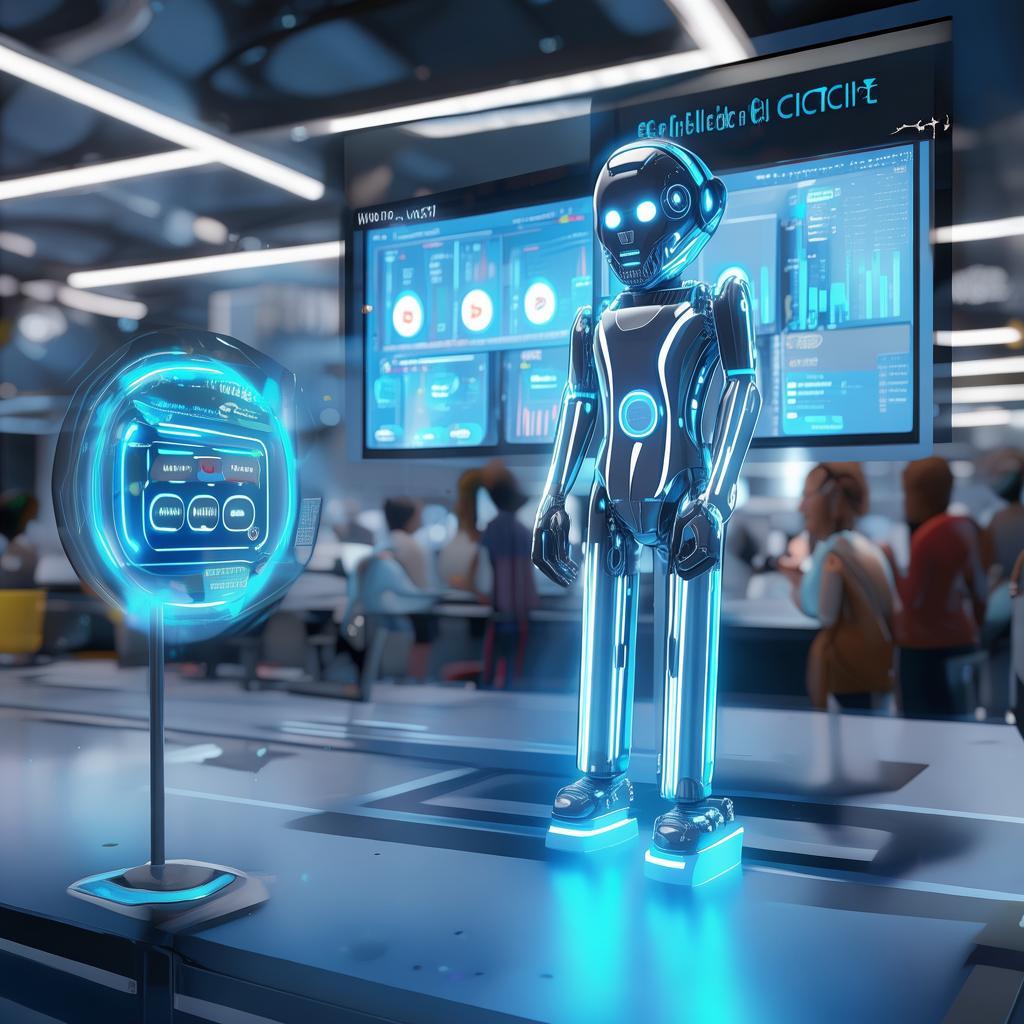Are you struggling to optimize your AI chatbot forms for better user engagement and conversion? This guide explores the latest techniques, including BERT+CTR models, to enhance your chatbot’s form capabilities, ensuring seamless customer interactions and actionable insights.
AI chatbot forms have revolutionized the way businesses interact with their customers, offering a seamless blend of automation and personalization. However, creating effective chatbot forms that drive conversions and provide valuable data can be a daunting task. This article delves into the world of AI chatbot forms, providing you with actionable insights and strategies to optimize your customer interactions.
Understanding the Importance of AI Chatbot Forms
AI chatbot forms are not just digital replacements for traditional forms; they are dynamic tools that can adapt to user behavior, preferences, and context. By integrating AI, chatbot forms can offer a more personalized and efficient experience, reducing friction and increasing completion rates.
The primary goal of AI chatbot forms is to gather information from users in a conversational manner, making the process feel less like a task and more like a natural conversation. This approach not only enhances user satisfaction but also provides businesses with valuable data to improve their products and services.
Common Challenges with Traditional Chatbot Forms
Many businesses struggle with low completion rates and poor data quality when using traditional chatbot forms. These issues often stem from a lack of personalization, confusing layouts, and a lack of clear guidance for users.
For instance, a user might enter their information into a form only to realize they’ve entered the wrong details halfway through. This can lead to frustration and a loss of trust in the brand. Additionally, without proper validation and feedback, users may not understand how their data will be used, further reducing the likelihood of form completion.
How BERT+CTR Models Can Transform Your Chatbot Forms
The integration of BERT (Bidirectional Encoder Representations from Transformers) and CTR (Click-Through Rate) models has significantly enhanced the capabilities of AI chatbot forms. BERT, with its ability to understand context and intent, can help in creating more relevant and engaging form questions. Meanwhile, CTR models help in predicting which form elements are likely to drive higher conversion rates.
For example, BERT can analyze user interactions in real-time, adjusting the form’s flow based on the user’s responses. This ensures that the most relevant questions are presented at the right time, increasing the likelihood of completion. On the other hand, CTR models can optimize the placement and design of form elements to maximize user engagement.
Case Study: Optimizing E-commerce Chatbot Forms
A leading e-commerce platform implemented BERT+CTR models in their chatbot forms and saw a 30% increase in form completion rates. By analyzing user behavior and preferences, the platform was able to tailor the form experience, reducing the number of steps and eliminating unnecessary questions.
The platform also used CTR models to optimize the placement of form elements, ensuring that the most important information was presented first. This not only improved the user experience but also provided the platform with valuable data to refine their marketing strategies.
Practical Tips for Optimizing AI Chatbot Forms
Creating effective AI chatbot forms requires a combination of technical expertise and user-centric design. Here are some practical tips to help you optimize your chatbot forms:
- Keep it Simple: Avoid overwhelming users with too many fields. Only ask for essential information and provide clear instructions.
- Personalize the Experience: Use AI to personalize the form based on user behavior and preferences. For example, if a user has previously purchased a product, the form can pre-fill their details.
- Provide Real-Time Feedback: Use AI to validate user inputs in real-time, providing immediate feedback and guiding users to correct any mistakes.
- Test and Iterate: Continuously test different versions of your chatbot forms to identify what works best. Use A/B testing to compare conversion rates and make data-driven decisions.
FAQ Section
Q: What is BERT+CTR in the context of AI chatbot forms?
A: BERT+CTR refers to the integration of BERT (Bidirectional Encoder Representations from Transformers) and CTR (Click-Through Rate) models. BERT helps in understanding user intent and context, while CTR models predict which form elements are likely to drive higher conversion rates.
Q: How can AI chatbot forms improve user engagement?
A: AI chatbot forms can improve user engagement by providing a personalized and conversational experience. They can adapt to user behavior, offer real-time feedback, and streamline the form completion process, making it feel less like a chore and more like a natural conversation.
Q: What are some common mistakes to avoid when designing AI chatbot forms?
A: Common mistakes include asking for too much information, not providing clear instructions, and failing to personalize the experience. It’s essential to keep the form simple, user-friendly, and tailored to the user’s needs and preferences.
Q: How can I measure the effectiveness of my AI chatbot forms?
A: You can measure the effectiveness of your AI chatbot forms by tracking key metrics such as form completion rates, conversion rates, and user feedback. A/B testing and continuous optimization are also crucial to improving form performance.
Conclusion
AI chatbot forms are a powerful tool for businesses looking to enhance customer interactions and gather valuable data. By leveraging BERT+CTR models and following best practices in form design, you can create seamless, personalized experiences that drive conversions and improve user satisfaction.
Remember, the key to successful AI chatbot forms lies in understanding your users’ needs and preferences, and continuously optimizing the form experience based on data-driven insights. With the right approach, you can transform your chatbot forms into a valuable asset for your business.
